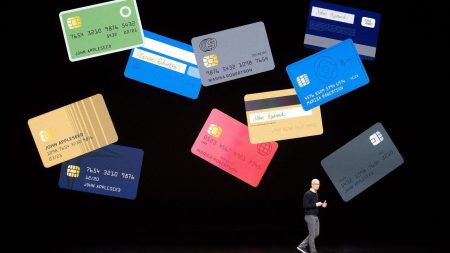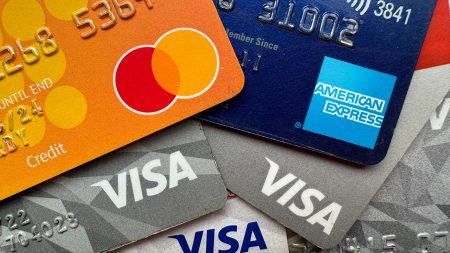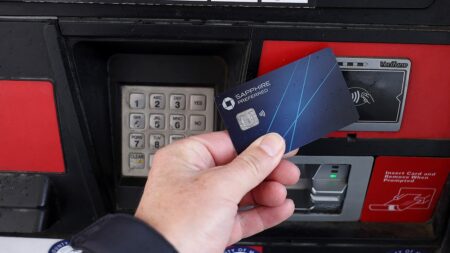A recently released survey by Northwestern Mutual demonstrated that Americans who carry personal debt owe an average of $21,800, exclusive of mortgages.
The data also reveals that more than a third (35%) of Americans who have personal debt say they’re carrying close to or at their highest level of debt ever. The survey also reports that more than four in 10 (43%) say they’re carrying close to or at their lowest level of debt ever.
This debt divide is due to a variety of factors, like income, demographics and individual money factors.
“This is a reminder that debt trends aren’t uniform, and everyone’s personal circumstances are different,” Christian Mitchell, chief customer officer at Northwestern Mutual, said in a statement. “More people feel like they’re moving in the right direction than those who do not, but there’s still a sizable universe of people carrying more debt than ever. No matter where you are on that spectrum, it’s important to be proactive and intentional about how debt is managed, and where it fits within a broader long-term financial plan.”
STATES WITH HIGHEST, LOWEST CREDIT CARD DEBT BURDENS RANKED IN NEW REPORT
Not surprising is that Northwestern Mutual’s research shows that the primary source of personal debt in America is credit card debt, accounting for more than double any other single source of personal debt. And people who carry personal debt say 30% of their monthly income goes toward paying it off, the same survey reveals.
These findings are from the latest wave of Northwestern Mutual’s 2023 Planning & Progress Study. The study was conducted by The Harris Poll on behalf of Northwestern Mutual among 2,740 U.S. adults aged 18 or older.
What factors are causing consumer debt?
Credit cards continue to be the primary source of personal debt in America, accounting for more than double any other single source, according to Kyle Menke, CEO of Menke Financial, a Northwestern Mutual firm.
Debts like car loans, medical debt, home equity loans and student loans comprise the rest of the top five sources of debt, he also says.
Americans are different, says Menke, and we’re seeing those differences show up – especially across generations.
“For example, student debt weighs more heavily on younger generations,” he says.
Student loans represent the largest source of personal debt for 17% of Gen Z and 10% of millennials, while only 3% of Gen X reported the same, noted Menke.
“These differences help to demonstrate why everyone deserves their own financial plan to address their own unique financial situation,” he added.

How can debt be better managed?
Menke tells FOX Business that debt can be managed and there are several steps that anyone can take.
CREDIT CARD DEBT SET TO HIT $1T AS CHRONIC INFLATION CRUSHES AMERICANS
Step 1. Give yourself a break
“Some of the debt we accrued like student loans was likely necessary to be where we are today. Celebrate the success and go easy on yourself,” he says.
Step 2. Get organized
Before you do anything else, get a sense of everything you owe, the minimum payment and the interest rate you’re paying.
Step 3. Prioritize payback
Consider making extra payments on the debts with the highest interest rates first, he suggests.
Step 4. Lower your interest rates
If you have good credit, Menke says you might be able to qualify for a personal loan or consolidation loan or to refinance your student loans.
“If you have credit card debt, consider transferring your balance onto a new card with a zero-percent introductory rate and no balance transfer fees,” Menke says. “There’s no need to pay more than necessary in interest on your debt while paying it off. While you don’t want to simply move debt around, using strategies like this to lower your interest rates can help you free up cash to pay down your debts faster or to put toward other goals like saving for the future.”
Step 5. Try to find extra money
To pay down your debts, look to see if there is anything in your monthly budget that could be cut to free up funds to pay off debts, Menke says.
“You might be surprised to find savings by reconfiguring streaming services, cell phone providers, delivery services, and more – without significantly impacting your lifestyle,” he says.

Also, consider a side hustle with a ride-sharing gig, dog-walking service, photography or another creative venture.
“Follow a passion to free yourself from debt,” adds Menke.
How do present economic conditions and market influences impact the debt crisis that Americans are facing?
Today’s economic conditions are making it more challenging for borrowers related to refinancing opportunities, new home mortgages and home equity lines of credit, Menke says.
“Higher interest rates come along with higher costs to borrow and more incentive to focus on debt,” he explains. “Similarly, some of the interest that clients can earn by putting money in the bank offers them a less risky place to store capital versus investing.”
CLICK HERE TO GET THE FOX BUSINESS APP
The reality is that a well-rounded financial plan that addresses the impact of reducing debt, having appropriate emergency reserves and putting those emergency reserves in the right place – all while investing for the future – is what drives the best long-term results, Menke says.
And, says Menke, keep in mind that not all debt is bad debt.
“Low interest debt like refinanced student loans, low APR car loans and mortgages are a great way to own the things we need, while affording the ability to save for the future,” Menke says. “Debt that carries a lower APR than what you can earn on an investment can be a great way to invest for the future, while earning a spread on your investment gains over your interest.”
Read the full article here













